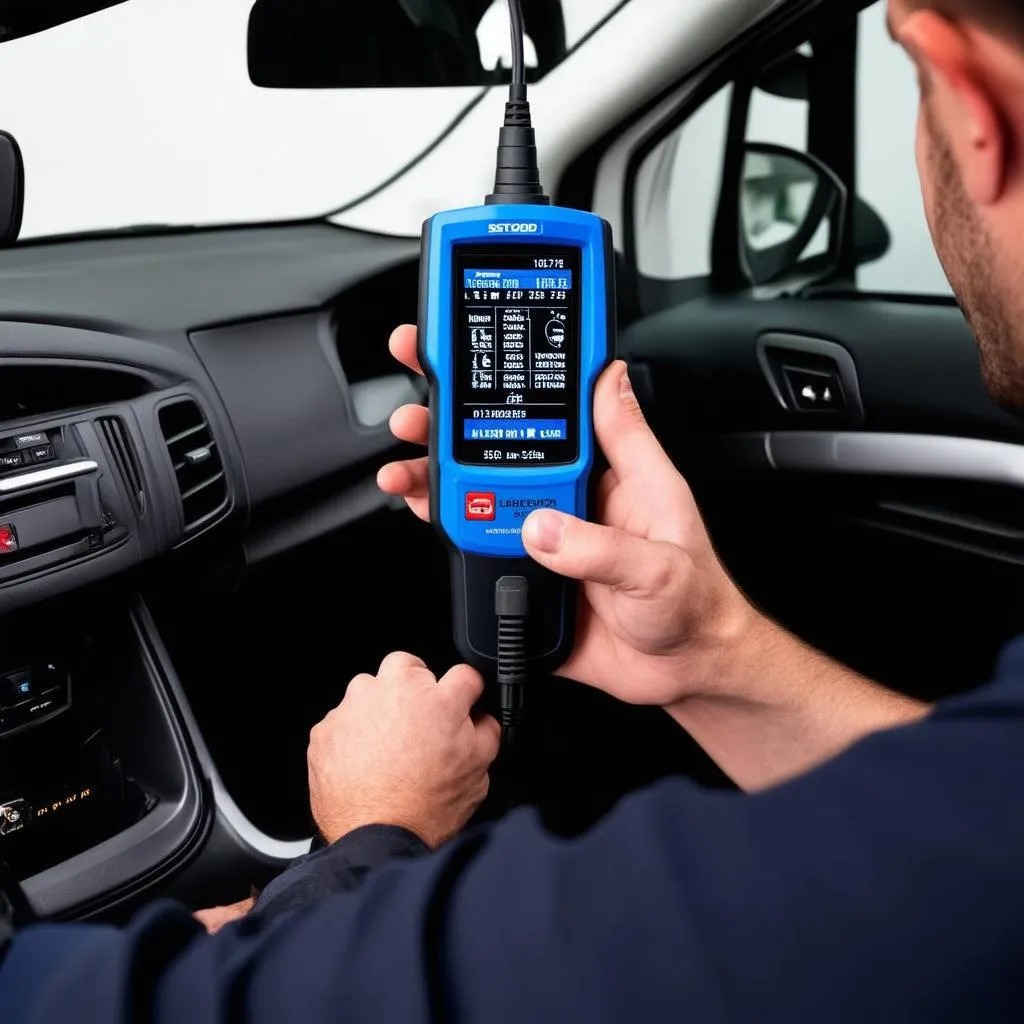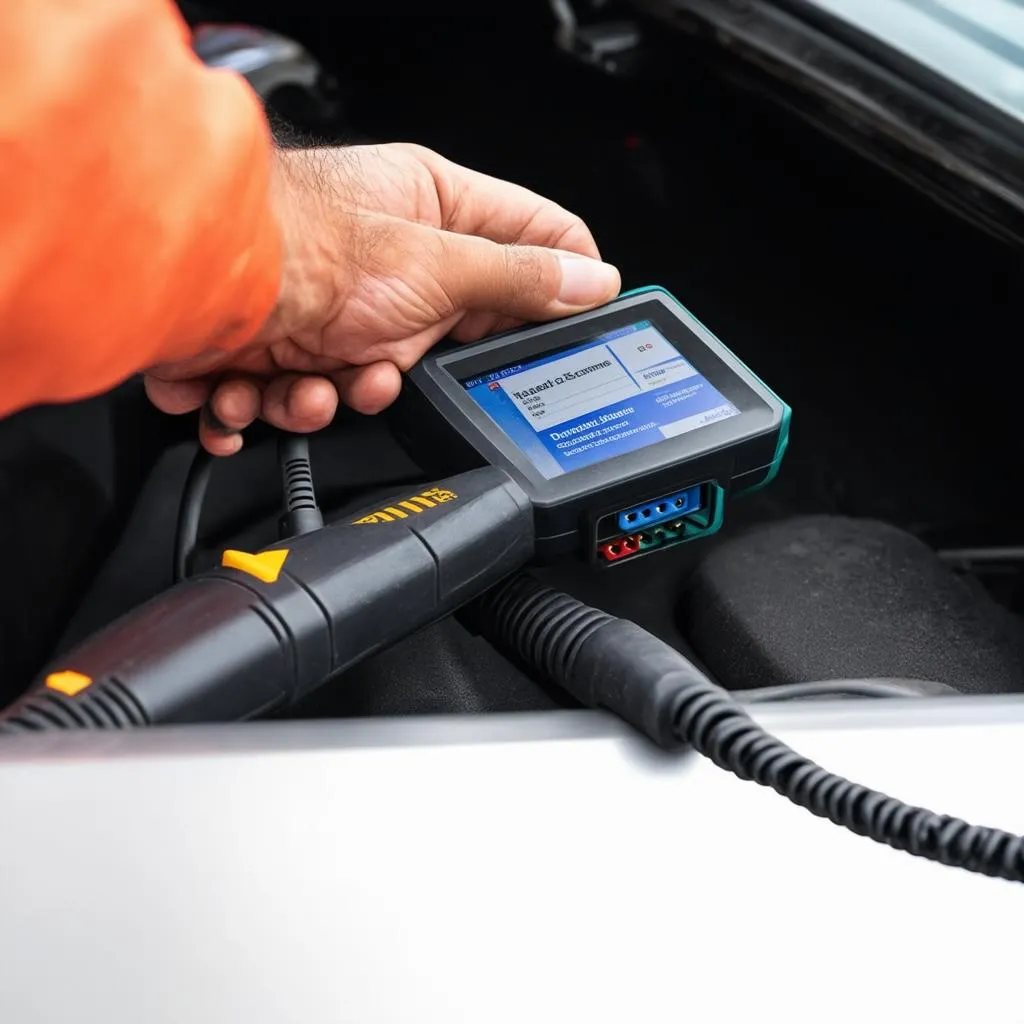Have you ever found yourself staring at your 2005 Mini Cooper, wondering how to get a handle on those pesky engine lights? You’re not alone! Many Mini Cooper owners struggle with understanding their car’s diagnostic system. So, let’s dive into the world of OBD and OBD II, and see how it all applies to your beloved Mini.
Understanding the Importance of OBD and OBD II
Think of the OBD (On-Board Diagnostics) system as your car’s personal health monitor. It’s a sophisticated system designed to help you diagnose and understand the internal workings of your vehicle, helping you avoid costly repairs down the line. And when it comes to the Mini Cooper, OBD and OBD II play a crucial role in ensuring smooth and reliable performance.
The “OBD” or “OBD II” Dilemma: What’s the Difference?
For those unfamiliar with the world of automotive diagnostics, the terms “OBD” and “OBD II” can seem like cryptic code. Let’s clear the air.
-
OBD (On-Board Diagnostics): The initial version of OBD, commonly known as “OBD I,” was implemented in vehicles beginning in the 1980s. While OBD I provided basic diagnostic information, it wasn’t as standardized as later systems.
-
OBD II (On-Board Diagnostics II): In 1996, the United States government mandated the implementation of OBD II for all vehicles. This standardized system provides more comprehensive diagnostic data and communication protocols, making it easier for mechanics to diagnose and repair your vehicle.
Why is OBD II Important for My 2005 Mini Cooper?
Now, let’s get back to your 2005 Mini Cooper. The 2005 Mini Cooper and all later models comply with OBD II standards, which means you’ve got a reliable diagnostic system at your fingertips. This is fantastic news because it means:
- Easier Troubleshooting: OBD II makes it easier for mechanics to identify the root cause of your car’s problems, reducing the time and cost of repairs.
- Improved Emissions: OBD II helps regulate engine performance to minimize emissions, making your Mini Cooper more environmentally friendly.
Connecting to Your Mini Cooper’s Diagnostic System: What You Need to Know
OBD II communication relies on a standardized connector, usually located under your car’s dashboard or near the steering wheel. This connector is known as the DLC (Data Link Connector).
How to Access Your Mini Cooper’s Diagnostic Data:
There are several ways to tap into your Mini Cooper’s OBD II system:
- Generic OBD II Scanners: These affordable tools, readily available at auto parts stores and online, allow you to read basic diagnostic trouble codes (DTCs) and access some vehicle data.
- Advanced Scanners: For more comprehensive diagnostics, specialized scanners, known as Dealer Scanners, can access manufacturer-specific data and perform advanced functions like clearing codes and reprogramming modules.
- Smartphone Apps: Many apps available on both Android and iOS platforms can connect to your Mini Cooper’s OBD II port using a Bluetooth adapter. These apps can display live data, read and clear codes, and even provide detailed information on specific components.
Common OBD II Issues and Solutions for Your 2005 Mini Cooper
Here are some of the most frequent diagnostic issues and possible solutions for your 2005 Mini Cooper:
- Check Engine Light (CEL): If your CEL is lit, it indicates a fault in your car’s emissions system. Use an OBD II scanner to read the DTCs to understand the specific problem.
- P0420 Code (Catalyst System Efficiency Below Threshold): This code usually points to a problem with your catalytic converter. A faulty catalytic converter can lead to poor fuel efficiency and excessive emissions.
- P0171 Code (System Too Lean (Bank 1)): This code often indicates a fuel delivery issue. Check for leaks in your fuel lines, inspect your fuel injectors, and ensure your fuel pump is operating correctly.
- P0300 Code (Random/Multiple Cylinder Misfire Detected): A misfire can cause engine vibration, rough idling, and reduced power. Check your spark plugs, ignition wires, and coil packs.
Finding a Trusted Mechanic for Your Mini Cooper
When it comes to your Mini Cooper, finding a reputable mechanic who understands the intricacies of this unique car is crucial. Look for a shop specializing in European vehicles, and don’t hesitate to ask about their experience with OBD II diagnostics and dealer scanners.
Pro Tip: Ask about the mechanic’s experience with the Mini Cooper’s unique engine management system and their familiarity with the specific software and tools required to diagnose and repair your car.
A Word on Feng Shui and Your Mini Cooper
While OBD II might not be a traditional Feng Shui element, your car’s overall health and maintenance can impact your energy levels and well-being. A well-maintained Mini Cooper, running smoothly and free of trouble codes, can help you feel more confident and connected to your surroundings.
Final Thoughts: Keep Your Mini Cooper in Top Shape
OBD II can be your ally in maintaining your 2005 Mini Cooper. By understanding its capabilities and knowing when to seek professional help, you can keep your car running smoothly and ensure a truly satisfying driving experience.
Don’t hesitate to reach out to us at TechCarUSA for any questions or assistance you might need!
 obd-scanner
obd-scanner
 mini-cooper
mini-cooper
 diagnostic-tool
diagnostic-tool
Contact us at Whatsapp: +84767531508 for any questions or assistance you might need! We have expert technicians available 24/7 to help you with your Mini Cooper’s diagnostics needs.